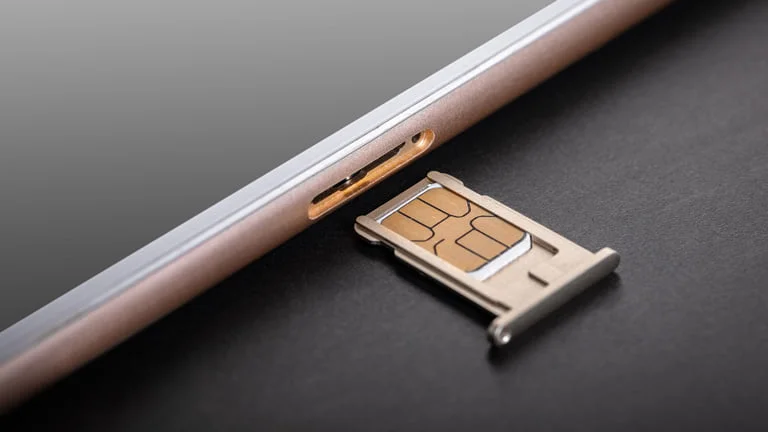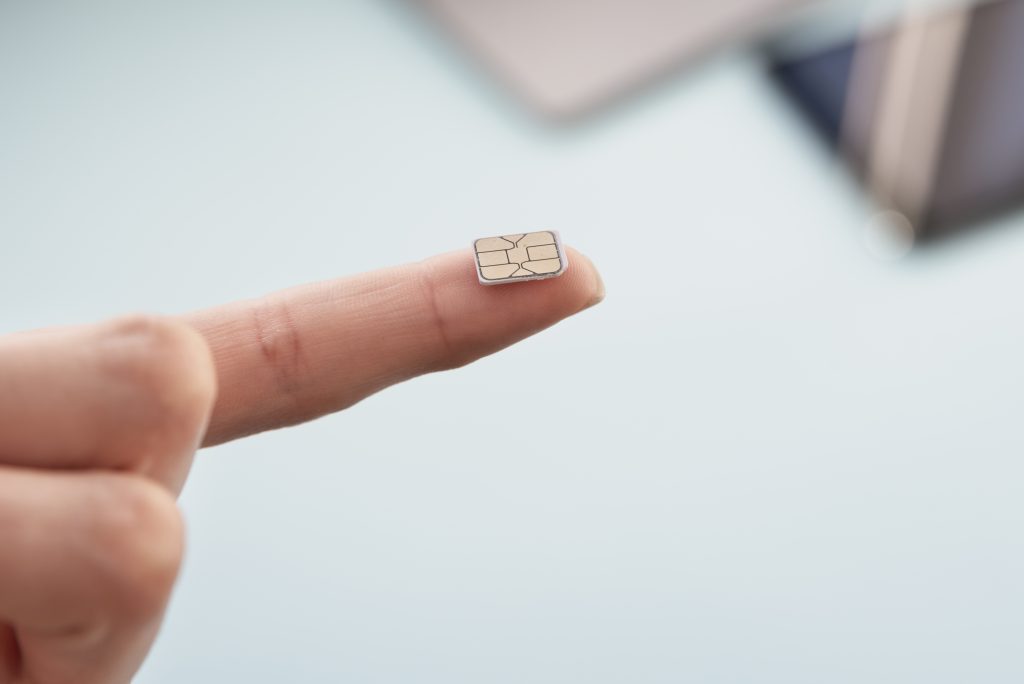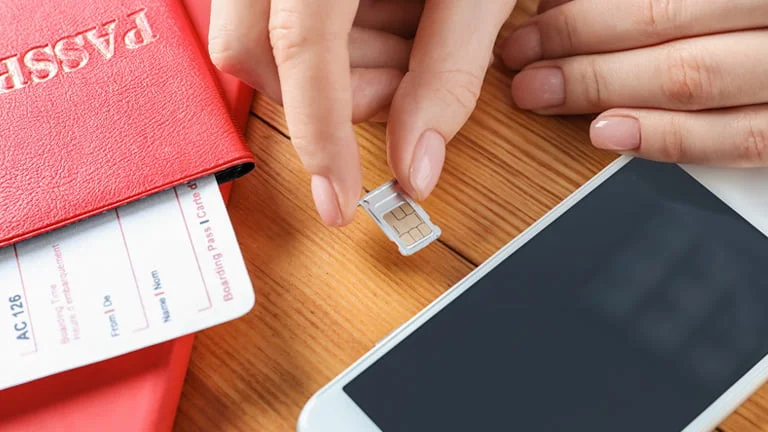No, photos are not stored on a SIM card. SIM cards, or Subscriber Identity Module cards, are small chips in your mobile device that primarily contain information related to your cellular network, such as your phone number and contacts. They have extremely limited storage capacity and are not designed to store photos or other large files.
Instead, photos taken with your smartphone are typically stored in the device’s internal memory or on an external memory card, such as a microSD card, if your device supports one. This allows you to capture and store a considerable number of photos without overloading your SIM card.
So, when you take pictures with your phone, they are saved on your device’s memory, ensuring you have ample space to preserve your precious memories.
Where Photos Are Stored on Mobile Devices?

One of the joys of owning a smartphone is the ability to capture and cherish precious moments through photos. But have you ever wondered where these photos are stored within your device?
When you take a photo with your smartphone, it gets saved in the device’s internal memory by default. The internal memory, often referred to as onboard storage, is where your device stores its operating system, apps, and user data, including photos and videos. It’s like your device’s internal hard drive.
However, many smartphones also provide an option to store photos on an external memory card, such as a microSD card. This can be a useful feature, especially if your device has limited internal storage capacity. When you insert a memory card, your device gives you the choice to save photos either to the internal memory or the memory card.
The specific location of this setting can vary depending on your device and its operating system (Android, iOS, etc.). It’s usually found in the camera app’s settings or the storage settings of your device. You can select your preference for photo storage and easily switch between the internal memory and the memory card if you need more space.
So, in essence, your photos are primarily stored in the internal memory of your smartphone. However, you have the flexibility to choose an external memory card as an alternate storage location. This choice allows you to manage your storage capacity effectively and ensure that your cherished memories are safe and accessible.
Can Photos Be Stored on a SIM Card?
As much as SIM cards are integral to mobile communication, they are not designed for storing photos. These tiny chips serve a specific purpose in the mobile ecosystem, primarily focused on network connectivity and security.
The primary function of a SIM card is to authenticate your device on the cellular network. It contains vital information about your identity, including your phone number and unique International Mobile Subscriber Identity (IMSI). This information is essential for the network to recognize and authorize your device to make calls, send texts, and use mobile data.
However, when it comes to storing photos, SIM cards are not equipped for the task. They have extremely limited storage capacity, typically in the kilobyte (KB) range. In contrast, modern photos taken with smartphones are significantly larger, ranging from a few hundred kilobytes (KB) to several megabytes (MB) in size. Attempting to store photos on a SIM card would be impractical due to this severe storage constraint.
Additionally, SIM cards lack the necessary software and file management capabilities to handle photos. They are not designed to store or manage multimedia content like images or videos. Their primary focus is on ensuring the secure and efficient operation of your device on the mobile network.
In summary, SIM cards are vital for mobile network connectivity but are not suitable for storing photos. Their limited storage capacity and lack of multimedia capabilities make them unsuitable for this purpose. When it comes to photos, your device’s internal memory or external memory card are the appropriate storage options.
Managing Photos on Your Device
As smartphone cameras continue to improve, we capture more photos and memories than ever before. But what do you do with all those photos? How can you effectively manage and organize your growing collection?
Your smartphone comes equipped with a built-in photo gallery app, which serves as a central hub for all your photos. This app provides you with a user-friendly interface to view, organize, and manage your images. Here are some essential tips for managing your photos effectively:
Create Albums: Most gallery apps allow you to create custom photo albums. Organize your photos into albums based on events, dates, or categories. For example, you can create albums for vacations, birthdays, or family gatherings.
Delete Unwanted Photos: Regularly go through your photos and delete any that you no longer need or want. This practice helps free up storage space and keeps your photo collection clutter-free.
Use Cloud Storage: Many smartphones offer cloud storage options that automatically back up your photos to the cloud. This ensures your photos are safe even if you lose your device. Popular cloud storage services include Google Photos, Apple iCloud, and Dropbox.
Sort by Date or Location: Gallery apps often allow you to sort photos by date or location. This feature can be handy when you’re looking for specific photos taken on a particular day or at a specific place.
Favorite and Tag Photos: Most gallery apps let you mark photos as favorites or add tags for easier retrieval. This is helpful for quickly accessing your most cherished or categorized images.
By using your smartphone’s gallery app and implementing these practices, you can effectively manage and enjoy your photos. Whether you’re organizing memories of family gatherings or epic travel adventures, keeping your photo collection in order ensures that you can easily access and relive your special moments.
How to Transfer Photos?
Transferring photos between devices or storage locations is a common need in our digital age. Whether you’re upgrading to a new smartphone, sharing photos with friends and family, or simply backing up your cherished memories, knowing how to transfer photos effectively can save you time and ensure your photos are safe and accessible. Here’s an expanded guide on how to transfer photos:
USB Cable: One of the most straightforward methods for transferring photos between your smartphone and computer is by using a USB cable. Start by connecting your device to your computer using the cable. Your computer should recognize the device as a storage drive. Once connected, navigate to the folder where your photos are stored on your device. From there, you can copy and paste photos between your device and computer. This method is quick and efficient, making it ideal for transferring a large number of photos.
Cloud Storage Services: Cloud storage services like Google Drive, Apple iCloud, and Dropbox offer convenient ways to back up and access your photos across multiple devices. To use this method, you’ll need to install the corresponding app on your smartphone and create an account. Once set up, you can upload your photos to the cloud directly from your smartphone. These photos are then accessible from your computer or other devices with internet connectivity. Cloud storage is a secure way to keep your photos safe and easily share them with others.
Email: You can email individual photos or a collection of photos to yourself. This method is handy for quickly sharing a few pictures or accessing them from your email inbox. To use this method, open your device’s photo gallery, select the photos you want to transfer, and choose the “Share” or “Send via email” option. Enter your email address, and the photos will be sent as attachments to your email. You can then access them on your computer by opening the email.
Messaging Apps: Many messaging apps, such as WhatsApp and Facebook Messenger, allow you to send photos to yourself or others. Simply create a chat with yourself, attach the photos, and send them. You can then access the photos from the chat history on your computer or another device where you use the messaging app.
External Memory Card: If your smartphone has an external memory card (e.g., microSD card), you can transfer photos by removing the card and inserting it into a card reader on your computer. Your computer will recognize the card as a storage device, allowing you to copy and paste photos to and from the card.
Wireless Transfer Apps: Several apps are available for wireless photo transfer between devices. These apps use your Wi-Fi network to establish a connection between your smartphone and computer. Apps like AirDroid, Pushbullet, and SHAREit allow you to transfer photos and other files without the need for cables.
QR Codes: Some devices and apps offer the option to generate QR codes for photos. You can create a QR code for a photo on your smartphone and then scan it with your computer’s camera to transfer the image.
In summary, there are various methods for transferring photos, each with its advantages. The choice of method depends on your preferences, the devices you’re using, and your specific needs. Whether you opt for a USB cable, cloud storage, email, or other methods, mastering photo transfer techniques ensures that your memories are easily accessible and safely stored.
Can You Recover Deleted Photos from a SIM Card?

Recovering deleted photos from a SIM card can be a challenging task. SIM cards are not typically designed to store photos, and their primary function revolves around network connectivity and identification. Therefore, the chances of recovering deleted photos directly from a SIM card are quite slim.
When photos are deleted from a mobile device, they are usually removed from the device’s internal memory or external memory card, not from the SIM card. The SIM card primarily stores information related to your mobile network subscription, such as your phone number and network credentials.
However, if you’ve accidentally deleted photos from your device’s memory, there may still be hope for recovery. The key lies in understanding where your photos were originally stored. Here are some steps to consider:
Check Internal and External Memory: Determine whether your photos were stored in your device’s internal memory or on an external memory card. This information is crucial for the recovery process.
Use Data Recovery Software: If your photos were stored in internal memory or on an external memory card, you can try using data recovery software designed for your specific device and operating system. These programs can sometimes retrieve deleted files, including photos, by scanning the device’s storage.
Act Quickly: The chances of successful photo recovery decrease with time. It’s essential to initiate the recovery process as soon as possible after realizing that photos have been deleted.
Backup and Prevention: To avoid such situations in the future, regularly back up your photos to cloud storage or a computer. Additionally, be cautious when deleting files, and double-check your selections to prevent accidental deletions.
Seek Professional Help: If you’re unsure about the recovery process or need assistance, consider consulting a professional data recovery service. They may have advanced tools and expertise to help recover lost data.
In conclusion, while recovering deleted photos from a SIM card is unlikely, there may still be hope if the photos were stored in your device’s internal memory or on an external memory card. Swift action, the right recovery tools, and preventive measures can all play a role in successful photo recovery. Remember to regularly back up your photos to minimize the impact of accidental deletions and data loss.
FAQ
Do pictures save to the phone or SIM card?
Pictures are typically saved to your phone’s internal memory or external memory card, such as a microSD card, depending on your device’s settings. SIM cards are not designed for storing photos.
Are all photos saved to the SIM card?
No, photos are not saved to the SIM card by default. They are primarily stored in your phone’s internal memory or on an external memory card if you’ve configured your device to do so.
Will I lose my photos if I lose my SIM card?
Losing your SIM card should not result in the loss of your photos. Photos are stored in your phone’s memory, so as long as you have your device, your photos should remain accessible.
Can you retrieve photos from a SIM card?
Retrieving photos directly from a SIM card is challenging because SIM cards are not designed for storing photos.
What is stored in a SIM card?
SIM cards primarily store information related to your mobile network subscription, such as your phone number, contacts, and network credentials. They are essential for network connectivity and authentication.
How can I get pictures off my broken phone?
To retrieve pictures from a broken phone, you can try the following methods: If the screen is damaged but the phone still works, connect it to a computer using a USB cable and access your photos.
Is it possible to get photos off a dead phone?
Yes, it is possible to recover photos from a dead phone’s internal storage. You can consult data recovery specialists or use software tools designed for this purpose. However, success depends on the extent of the phone’s damage.
Can you recover photos from a phone that won’t turn on?
Recovery from a phone that won’t turn on can be challenging, but it is possible in some cases. Consult data recovery professionals or try specialized software tools to attempt data retrieval.
How to recover permanently deleted photos from the gallery without a backup?
Recovering permanently deleted photos without a backup can be difficult, but you can try the following: Check the “Recently Deleted” or “Trash” folder in your gallery app; some photos may still be recoverable there.
Final words
On the whole, SIM cards are not intended for storing photos. Their primary function is to enable network communication by storing information related to your carrier. When it comes to photo storage on your mobile device, photos are typically stored in the device’s internal memory or on external memory cards.
Where your photos are located and how to manage them is essential for preserving your precious memories effectively. So, while your SIM card plays a crucial role in keeping you connected, it won’t be the place where your cherished photos reside.

